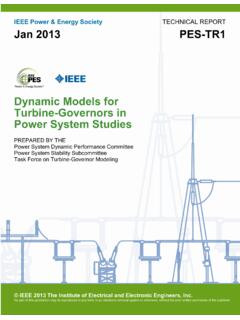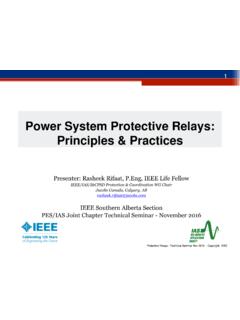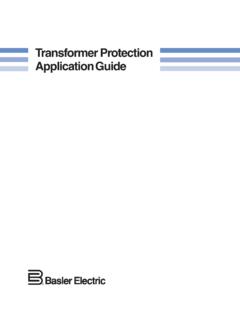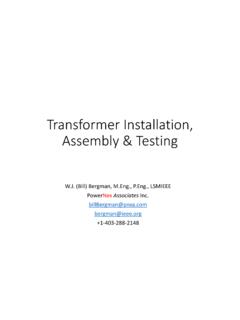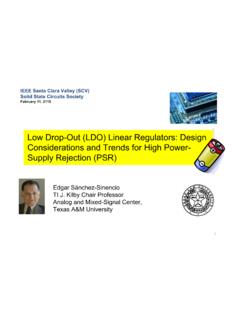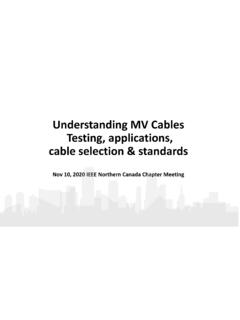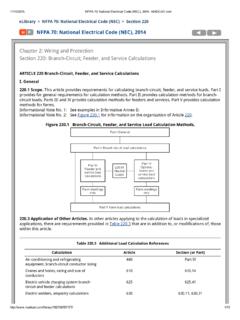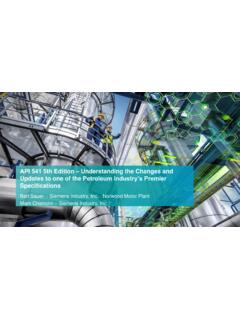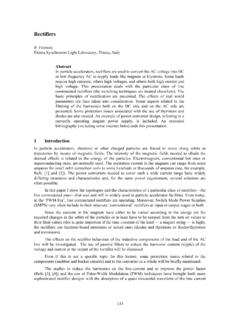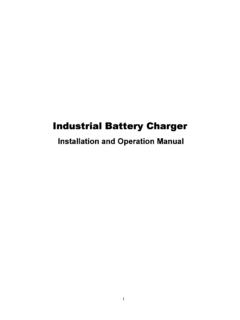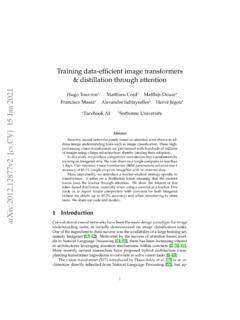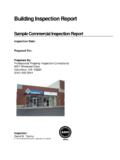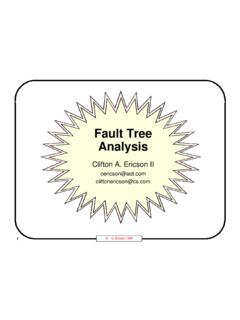Transcription of PREPARATION OF TRANSFORMER SPECIFICATIONS
1 PREPARATION OF TRANSFORMER SPECIFICATIONS By Presented at IEEE Southern Vallamkonda Sankar Alberta (SAS)-Power Engineering E-mail: Society (PES)-Industry Application Society (IAS) seminar on November 19, 2012.
2 -2- OBJECTIVES To prepare SPECIFICATIONS for procuring reliable transformers at market prices. To prepare clear and concise SPECIFICATIONS with no ambiguities. To guide users in determining the TRANSFORMER parameters. To ensure that the TRANSFORMER parameters meet system needs. To use existing standards to the full extent in the SPECIFICATIONS . To familiarize users as to how SPECIFICATIONS affect the design and the cost. To encourage the manufacturers to submit cost effective alternates with low losses, meeting all the system needs.
3 To understand the dangers when the transformers are used different to what is stated in the SPECIFICATIONS . To discuss the advantages and disadvantages of invited tendering verses open tendering. To know and understand the clarifications/confirmations to ask in the Tender Review and Design Review meetings. To avoid delays in delivery by following up with the manufacturer at critical intervals. To check the quality of the TRANSFORMER by inspecting at correct production stages. To ensure that the factory tests meet system conditions and the standards.
4 To identify the importance of transportation, installation and maintenance when evaluating tenders. To obtain the best benefits by knowing the characteristics and the costs of the materials and the components used in the transformers . To interact with TRANSFORMER manufacturers for mutual benefits. To initiate new or evolving innovations in TRANSFORMER design and manufacture for the reduction of cost without compromising the performance. -3- FUNCTIONS OF TECHNICAL SPECIFICATIONS 1. From an User perspective: To formally and fairly communicate exactly what the Contractor has to deliver.
5 [1] 2. From a Contractor perspective: To be able to accurately offer services and products which provide a satisfactory solution (technical and commercial) to user; while remaining a long-term profitable business. [1] 3. For both User and Contractor: To avoid relationship mishaps associated with costly variation work. [1] 4. Enable the manufacturer s design engineers to understand the characteristics of the user s system and how the transformers are operated in service. 5. Create an opportunity for manufacturers to apply improved design and manufacturing methods beneficial to users.
6 Also an opportunity to use advanced materials and accessories. 6. Many users are of the opinion that they are procuring the lowest cost transformers by ordering based on the lowest evaluated cost bid. Effective SPECIFICATIONS will help procure transformers with the lowest life cycle cost. 7. Technical SPECIFICATIONS provide the user a future record of design parameters to which a particular TRANSFORMER was purchased. This information is essential for users when a specific TRANSFORMER has to be moved to a different location with different system needs or when a mature system s contingency plans change.
7 New requirements evolve over time. Past SPECIFICATIONS may not have considered modern criteria such as: (i) GIC (Geometrically Induced Currents) requirements. (ii) Free buckling requirements on inner coils. (iii) Advanced on-line monitoring devices. (iv) Vacuum type on-load tap changers. (v) SFRA requirements. (vi) Apparent charge (pC). (vii) Impact of secondary generation, especially on transformers with dual secondaries. Thorough SPECIFICATIONS are the first step in establishing long term reliability of transformers .
8 SPECIFICATIONS should cover the present and future system requirements. transformers are reliable and offer trouble free service if they are operated as stated in the SPECIFICATIONS and maintained to minimize aging of the insulation. SPECIFICATIONS should encourage new developments that increase efficiency while reducing the life cycle cost. Constructive participation of users in tender review, design review, inspections and resolving conflicts will enhance the long term reliability of the transformers . CEATI (Canadian Electrical Association Technical Institute) has published a report on Review and summary of key standards and guides for station-class power transformers [18].
9 This is a good reference while preparing the SPECIFICATIONS . Input from maintenance engineers, operating engineers and the manufacturer s design engineers is essential in preparing effective SPECIFICATIONS . -4- TOPICS 1. Ratings. 2. Standards. 3. single phase verses three phase. 4. Winding connections. 5. Vector group. 6. Insulation levels. 7. Terminals. 8. Accessories. 9. Types of cooling. 10. Sound levels. 11. Taps (range, locations etc.). 12. Types of taps. 13. Impedance. 14.
10 Capitalization of losses. 15. Short-circuit withstand. 16. Special requirements (altitude, over excitation, GIC etc.). 17. Overloads. 18. Parallel operation. 19. Rating plate. 20. Alternatives. 21. Interesting clauses in the SPECIFICATIONS . 22. Globalization. 23. Data sheets. 24. Tests. 25. Tender and design review meetings. 26. Transportation and limiting dimensions/weights. 27. Conclusions. -5- RATINGS The TRANSFORMER s rating is usually determined based on the system expected load growth, available generation and expected rate of return on the investment.
